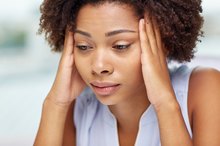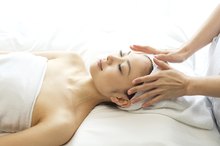5 Types of Terrible Headaches and How to Ease the Pain
Headaches are universal. Almost everyone, at some point, has experienced some form of headache. Most run their course, and then you return to normal functioning. However, some headaches can be downright debilitating. Below are five of the most common headache types — including tension, sinus, migraine, cluster and hormonal — and what you can do about each of them. Keep in mind that you can have more than one type of headache at a time (as if one wasn’t bad enough).
1. Tension Headaches
Tension headaches are the most common type and are characterized by a tight, band-like feeling around the forehead, temples and back of the head. Stress, lack of food, dehydration and tight neck muscles can all be triggers. Thankfully, tension headaches are typically minimal in severity, and you can usually still function at work or at home.
Treatment can include over-the-counter medications like ibuprofen, naproxen, aspirin or acetaminophen. Even simply lying down with an ice pack can help. In many cases, getting out for exercise can help tension headaches by reducing stress. And drinking water can help if dehydration is the trigger.
Read more: How to Relieve a Headache in 10 Minutes
2. Migraines
Pain in the Base of the Head During Exercise
Learn More
Unlike tension headaches, migraines are characterized by more severe, throbbing pain. It can affect one or both sides and is often around the eyes, forehead and temples. But it can also include neck pain. Nausea and/or vomiting, sensitivity to light/noise/smells, a lack of concentration and irritability are also often present. If unsuccessfully treated, migraines can last 48 to 72 hours.
Treatment can include prescription medication like triptans or preventive treatments like Botox. Identifying and addressing underlying triggers — stress, hormonal fluctuations, lack of sleep, weather changes and bright light — is crucial to preventing attacks. One such treatment for weather-induced migraines is the use of MigraineX, an ear-pressure device that minimizes the effect of a change in barometric pressure.
Listen now: Why America’s Obsession with ‘Happiness’ Is Totally Stressing Us Out
3. Sinus Headaches
Sinus headaches are often migraine headaches with associated sinus symptoms. Sinus headaches are only considered “true” sinus headaches in the presence of a sinus infection, which is accompanied by a fever and lots of phlegm. By definition, a true sinus headache should also be responsive to antibiotics.
Symptoms also include facial pain, nasal and sinus congestion and pain with leaning forward. If you’re also experiencing a disabling headache, nausea and sensitivity to light, then you’ll probably be diagnosed with a migraine headache. This type of headache should respond to migraine-specific medication like a triptan. In fact, the triptan (such as sumatriptan) should help lessen the sinus symptoms as well as the headache.
4. Cluster Headaches
Causes of a Temple Headache
Learn More
Cluster headaches are often referred to as the “suicide headache” because the pain can be extremely severe and truly debilitating. They affect men more than women, and as the name implies, they often “cluster” together, occurring repeatedly over the course of a day or several weeks. Symptoms include a piercing pain in and around only one eye, a drooping eyelid and teary eye on the same side as the pain and nasal congestion.
Treatment usually involves injectable sumatriptan and high-flow oxygen. A course of steroids can also be helpful. And recently, a device called gammaCore was approved by the American Federal Drug Administration (FDA) for acute cluster treatment.
Read more: 8 Surprising Things Giving You a Headache
5. Hormonal Headaches
As you might guess, hormonal headaches are headaches triggered in women by changes in hormone levels. The most common type of a hormonal headache is a menstrual migraine, in which a woman experiences a migraine during the two days prior to menses up to three days into her menses.
Other types of hormonal headaches can occur with ovulation (mid-cycle), postpartum and perimenopause (prior to menopause). During this time, there can be a tremendous fluctuation of both estradiol and progesterone, exacerbating the headache (most commonly a migraine). Treatment options include over-the-counter medications, an ice pack, relaxation exercises or triptans (if it’s a migraine).
What Do YOU Think?
When was the last time you had a headache? What type of headache was it? How did you deal with it? Have you ever taken medication? Did you find any of the information or tips in this article helpful? Share your experiences and suggestions in the comments below!
About the Author
Susan Hutchinson, M.D., medical adviser for MigraineX, is a headache specialist and board-certified family practice physician. In February 2007, she founded Orange County Migraine & Headache Center, dedicated to serving patients with headache and mood disorders. She lectures nationally on the subject of headaches, has written dozens of articles for medical journals, has participated in headache research and is very active in numerous professional organizations, including the American Headache Society and the National Headache Foundation.









